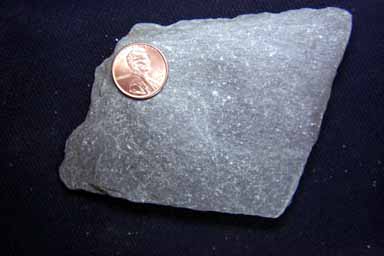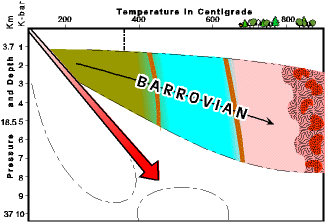|
SLATE #1 Slate - Other specific examples: #1 | #2 | #3 | #4 shale |slate | phyllite | schist | gneiss  Another view
Another view
Return to: Alphabetical Listing Basic Key Advanced Key |
|||
Composition
|
Description
Slatey cleavage foliation composed of the lining up of the basal cleavages in the new chlorite and/or muscovite minerals. The result is slatey cleavage, the breaking of the rock into sheets along smooth, flat faces - as seen in this specimen. A distinct, weak sheen (light reflectance) is generally visible on cleavage faces, as seen here. The sheen shows up best when the rock is rotated in the light. The rock will often " ring " like a bell when tapped on a hard surface, another feature not found in the shale parent, or the next rock in the metamorphic sequence, phyllite. |
||
Tectonic Association
Slates are typically associated with major mountain building events when shales or clay rich sandstones (wackes) undergo low grade (Barrovian greenschist facies) metamorphism

|
Type of Metamorphism
Slates are part of a metamorphic sequence that begins with shale and progresses through slate, phyllite, schist, and gneiss. At the top of this column you can click through rocks showing the changes. Or go to Barrovian metamorphic changes.
|
||
